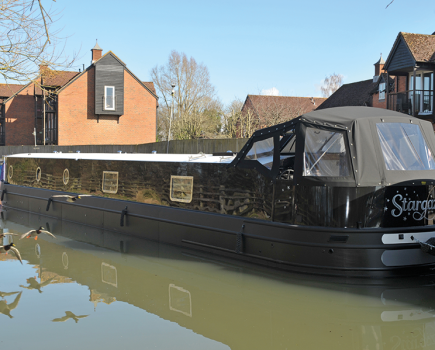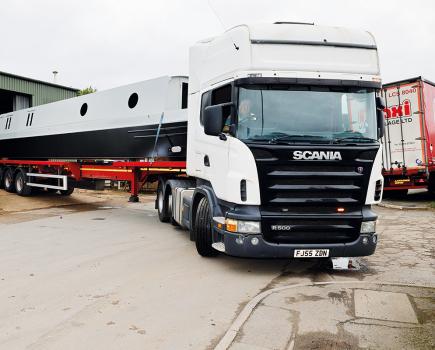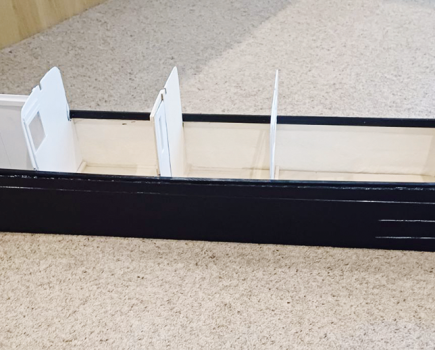From South African newbies to experienced liveaboards, all they had to do was downsize – and learn to steer

Life on a 60ft liveaboard is certainly a far cry from the four decades Brenda and I had previously spent in the southern African safari industry.
In 2014 we decided to relocate from South Africa to the UK where the rest of our family are. On one of our previous visits during 2010 we’d seen narrowboats for the first time at Foxton Locks, and after being invited aboard one for a cuppa, we were sold on the concept of residing permanently on a liveaboard.
With the decision made, two new words soon crept into our vocabulary – ‘minimalistic living’. Given that we had a two-story home in South Africa set on nearly four acres, moving onto a narrowboat was going to be a major change. Our house was huge and spacious with two lounges, a large entertainment area and much else. (It later transpired that our boat was about the same length, although a lot narrower, than our entertainment area and bar). However, by May 2015 we’d sold our house and most of what was in it, and in mid-October we arrived in the UK.
Prior to departing South Africa we’d found seven boats advertised on the internet that interested us. We immediately set about looking at them before buying Ashbridge, a 60ft four-berth vessel, which at time of purchase was standing in dry dock in Lymm, Cheshire. She had everything we’d wanted in a boat, and the price suited our budget.
With the sale and paperwork behind us, we soon found that buying a boat at the onset of winter can be problematic because of locks being closed for maintenance. Not being able to travel via the canal system from Cheshire to Wiltshire, where we’d chosen to base ourselves, meant our new home had to be moved by road.

Weighing 16 tons and being 60ft long Ashbridge needed a suitable low-loader and, at the other end, a big crane – all added costs, although we had no alternate option. Fortunately, the sellers, Stuart and Samantha Hamilton, were a great help, and gave us sage advice whenever needed.
It took a week before our boat arrived in Wiltshire and, on the advice of experienced narrowboaters, we moved into the well-appointed and managed Caen Hill Marina for the duration of the winter. As complete neophytes, we’d initially been thinking of wintering along the towpath.
Well fitted out, Ashbridge has a four-burner gas stove, microwave and fridge, TV, sound system, a Pullman dinette, shower and pump-out wc, ample storage space, two water tanks totalling 700lt and a 240-litre diesel tank.
Heating is via a Webasto and a diesel Bubble stove, and under our double bed there is an immersion heater. Throughout the 2015/16 winter we found the heating system to be adequate. At winter’s end, we were content in the knowledge that we’d past the test, this after several friends had opined that if we could survive the winter on a narrowboat we’d be good to go.

Ashbridge’s engine is a Perkins 104-22, and it is accessed from inside the boat, not via a hatch in the stern deck plates. It has also been placed slightly forward of where an engine would normally be. Stuart cleverly had two well insulated lift-off doors made that seal the entrance to the engine room. When the engine is running, there is hardly any sound to be heard such is the efficiency of the insulation.
At time of purchase, the battery system comprised three large 440amp leisure batteries, however, they’ve since completed their life cycle and we’ve replaced them with six 220amp batteries, plus we have a starter battery which is still the original.
Work on building Ashbridge commenced in late 2003 and she was completed in October 2005, Stuart and Sam oversaw the work and were heavily involved from start to finish. Their decision to sell due to health issues was with both sadness and reluctance. From our first meeting with them we realised Ashbridge had been a labour of love, and our taking possession of her was tinged with emotion from both sides.
Externally the boat does now need some TLC on the paintwork and we’ve made a start, perhaps I should rephrase that to read, Brenda’s made a start – using T-Cut and wax polish and the starboard side is coming along nicely.
My skill at the tiller had initially been limited to bumping around inside Caen Hill Marina between our berth and the refuelling point, with periodic help from resident experienced helmsmen Mike Simmons and Steve Cowham.

A slight hiccup during the early part of 2016 was that I had to return to South Africa while my UK residency application was being processed. This meant Brenda had to take care of moving our belongings aboard Ashbridge once they’d cleared Customs. A task she completed admirably.
Shortly after my return, in late March 2016 and with the onset of spring, we received a surprise invite. With over 20 years of living and touring extensively on narrowboats, the genial Caen Hill Marina management couple Mike Garforth and his partner Helen Pinder kindly invited us to follow them in their boat Firefly along a section of the Kennet & Avon from the marina to Dundas and back. Given that they’ve also done all of Europe’s canals and waterways, we couldn’t have had two better tutors.
It was an excellent introductory canal trip for Brenda and me, involving seven broad locks, six swingbridges, and two aqueducts each way. Add to this a mix of strong winds, stunning scenery, prolific waterfowl numbers, quaint historic villages, lovely pubs, rain, heavy fog, sunny skies, good wine, and some excellent company.
After our fun-filled four-day jaunt, little else was needed to convince us our new choice of lifestyle was the correct one, despite being so different to life in safari camps across southern Africa. Since that initial fun-filled introductory trip, we’ve moved on from neophyte status and now feel like old hands along the cut.

We’ve got even more stories from the waterways:
Me & My Boats: Lizzie Faircliff
Me & My Boats: Deborah Mendel-Lion
Me & My Boats: Martin and Margaret Eades
Image(s) provided by:
Archant







